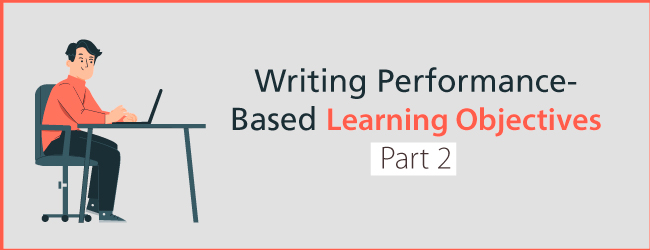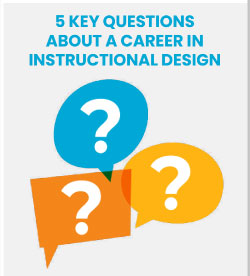
Measurable Learning Objectives
Part 1 of this series covered how to write four-part learning objectives. Part 2 focuses on making your performance or learning objectives measurable.
What Is Measurable?
Measurable learning objectives are very specific and provide a way for designers to determine if audience members can demonstrate what they have learned. Measurable objectives describe observable skills. They are quantifiable. You can write a test question or watch someone perform a measurable performance objective. For example, see the four-part learning objective below.
Given a large, snarly cat, the cat owner will dispense a pill into the cat’s mouth with a medicine dispenser so that the cat swallows the pill.
In this objective, the phrase dispense a pill into the cat’s mouth is an observable event. It is measurable—either someone demonstrated this super human skill or they did not. This skill could not be demonstrated in any other way. Even if you saw scratches on the arms and legs of the person dispensing the pill, it would not be observable proof that the pill landed in the cat’s mouth.
Action Verbs Are Good
The way to ensure that a learning objective is measurable is to use an action verb when describing the terminal behavior. Because we cannot see into the brain of the learner, the goal is to find verbs that demonstrate learning or a change in cognitive capacity.
Examples of verbs that demonstrate are: recognize, define, classify, select, decide, summarize, demonstrate, solve, illustrate, outline, contrast, create and design. You can actually picture someone doing these things.
Bloom’s Taxonomy—Revised Versions—Alternates
I really can’t end a discussion on learning objectives without doing you the favor of mentioning Bloom’s Taxonomy. When you are pulling out your hair fishing for action verbs, Benjamin Bloom, the educational psychologist, will come to your rescue. In the 1950s, he and his cohorts classified learning into three domains: Cognitive (knowledge), psychomotor (skills) and Affective (attitude).
They then subdivided the Cognitive and Affective categories into behaviors ranging from the the simple to the complex. For example, the Cognitive category consists of these increasingly complex skills: knowledge (recall), comprehension, application, analysis, synthesis and evaluation. For every one of these behaviors, they compiled action verbs that would work to demonstrate the skill.
There are problems with Bloom’s Taxonomy, but it is entrenched in the learning and educational industries so you will come across it often. That is, there is no cognitive research that demonstrates the hierarchy of thinking is correct. In fact, people may often use multiple levels at the same time.
There are newer and what I consider, better, versions of the original taxonomy. For example, in the Anderson and Krathwohl’s revision, the four categories include: different types and levels of knowledge — factual, conceptual, procedural and metacognitive. There is also a taxonomy updated for digital learning. Please check out the links below and read about another approach (the last link):
- Anderson and Krathwohl’s Revised Taxonomy
- Interactive Visualized Version of the Updated Taxonomy
- Blooms’ Digital Taxonomy
- A Learning Science Alternative to Bloom’s Taxonomy
Related Articles:
Writing Performance-based Learning Objectives: Part 1
Writing Performance-based Learning Objectives: Part 3
If you want to find out more about a career in instructional design, download my quick read eBook below.


Thanks
Hi Connie,
The link to Anderson and Krathwohl’s Revised Taxonomy has died. New address is https://thesecondprinciple.com/essential-teaching-skills/blooms-taxonomy-revised/
Cheers!
//Göran